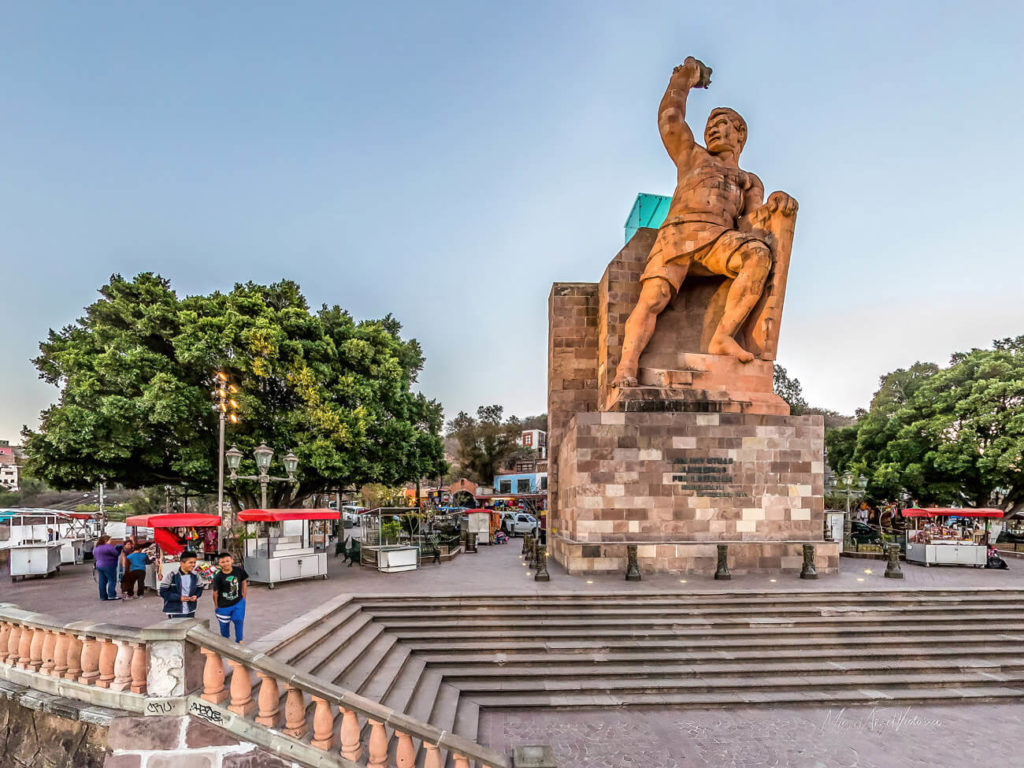Recommendations
Flights
The easiest way to get to Guanajuato is to fly into Guanajuato International Airport (BJX), also known as Bajío International Airport.
Once at Guanajuato Airport (BJX), you can take a taxi, Uber, or rent a car to get to downtown Guanajuato, which is about a 30-40 minute drive.
Once at Guanajuato Airport (BJX), you can take a taxi, Uber, or rent a car to get to downtown Guanajuato, which is about a 30-40 minute drive.

Tourist Attractions
We invite you to visit the most emblematic places of the city, perfect for complementing your stay during the days of our wedding.

- Las Momias de Guanajuato
Here you will appreciate the mummified remains of our geographic and cultural ancestors.
The current largest collection of natural mummies in the world, cultural heritage of the Municipality of Guanajuato, which today can be appreciated in this museum with 57 elements on display.
The current largest collection of natural mummies in the world, cultural heritage of the Municipality of Guanajuato, which today can be appreciated in this museum with 57 elements on display.

- Túneles de la subterránea
Several centuries ago, the Guanajuato River used to run beneath the city, causing frequent flooding during the rainy season.
To prevent this, the first water channels were created; a set of architectural modifications that over time would transform into kilometers of tunnels and deep streets, now the largest underground network in the world.
To prevent this, the first water channels were created; a set of architectural modifications that over time would transform into kilometers of tunnels and deep streets, now the largest underground network in the world.

- Jardín de la Unión
The city's main square, which used to serve as a marketplace and for traditional festivities.
In 1861, it was transformed into a small triangular garden with benches and lanterns.
The place is perfect for eating, having coffee, ice cream, or simply walking and taking spectacular photos.
In 1861, it was transformed into a small triangular garden with benches and lanterns.
The place is perfect for eating, having coffee, ice cream, or simply walking and taking spectacular photos.

- Teatro Juárez
One of the most recognized theaters, built between 1872 and 1903.
Its golden age occurred at the end of the 19th century until the outbreak of the Mexican Revolution in the early 20th century, being an important forum for artistic activity where renowned artists of the time performed.
Its golden age occurred at the end of the 19th century until the outbreak of the Mexican Revolution in the early 20th century, being an important forum for artistic activity where renowned artists of the time performed.

- Monumento al Pipila
Created by sculptor Juan Fernando Olaguíbel (who also created La Diana Cazadora), this monument was inaugurated in September 1939.
The location of the monument offers a panoramic view of the city of Guanajuato, making it a traditionally tourist spot.
The location of the monument offers a panoramic view of the city of Guanajuato, making it a traditionally tourist spot.

- Escalinatas de la UG
Here you will appreciate the mummified remains of our geographic and cultural ancestors.
The current largest collection of natural mummies in the world, cultural heritage of the Municipality of Guanajuato, which today can be appreciated in this museum with 57 elements on display.
The current largest collection of natural mummies in the world, cultural heritage of the Municipality of Guanajuato, which today can be appreciated in this museum with 57 elements on display.

- Alhóndiga de Granaditas
Site of an important battle in the War of Independence and a notable viceregal building.
It displays the history of that conflict, the archaeology, and ethnography of the region, as well as works by three great artists: painter José Chávez Morado and photographer Romualdo García.
It displays the history of that conflict, the archaeology, and ethnography of the region, as well as works by three great artists: painter José Chávez Morado and photographer Romualdo García.

- Presa de la Olla
On June 24, 2013, a decree was signed declaring the San Juan and Presa de la Olla Festivals and the San Ignacio de Loyola Festival as Intangible Cultural Heritage of the State of Guanajuato, which rescues and preserves the most emblematic traditions that have historical, cultural, and social significance for the inhabitants of the city of Guanajuato.

- Mina de la Valenciana
This mine began operating in the 16th century. Its silver extraction was so abundant that its production accounted for two-thirds of all the silver obtained in New Spain.
It is still being mined today at a depth of 760 meters.
La Valenciana is a type of underground mine.
It is still being mined today at a depth of 760 meters.
La Valenciana is a type of underground mine.

